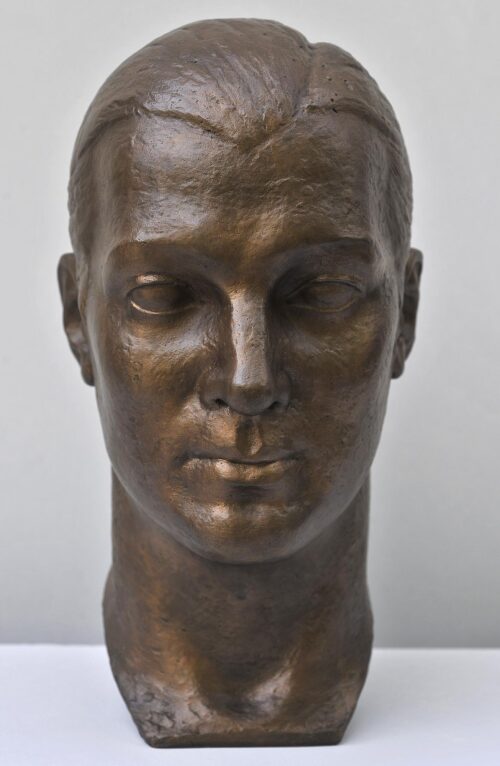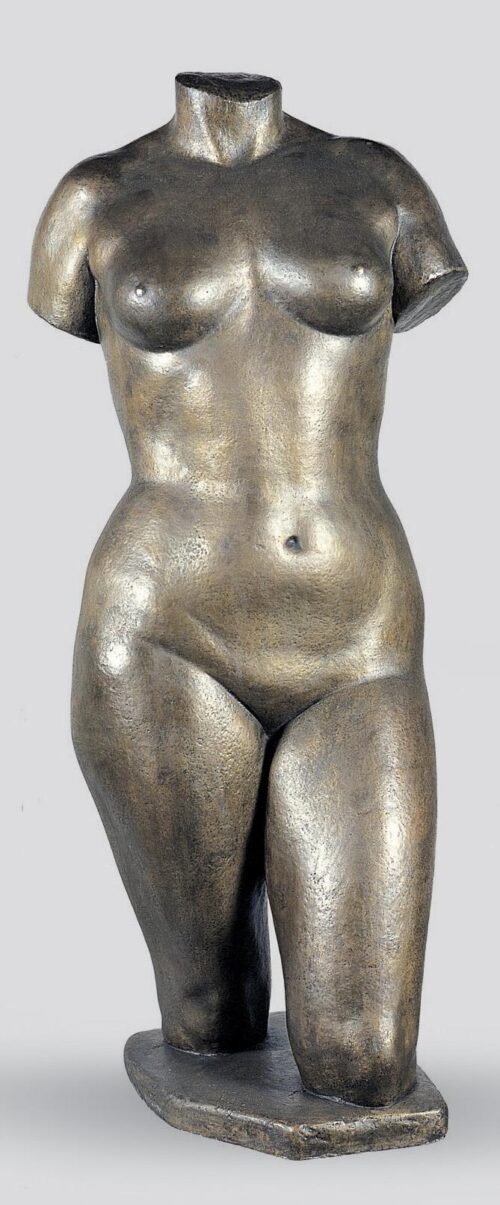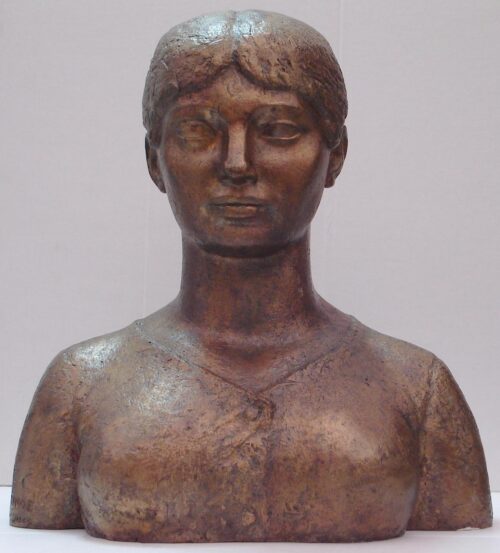
Perantinos Nikos (1910 - 1991)
Head of a Young Man (self-portrait), [1934]
He learned the art of marble carving from the marble sculptor Eleftherios Panoussis; he also studied at the Athens School of Fine Arts with professor Thomas Thomopoulos (1928-1933). In the 1930’s, he worked at the workshops of Kostas Dimitriadis and Michalis Tombros. In 1941, he was permanently appointed as sculptor at the Athens National Archaeological Museum; during the interval 1947-1951 he continued his studies in Paris on a French Academy fellowship. In the French capital, he studied at the Academie Julian and the Ecole des Beaux Arts with professors Marcel Gimond, Alfred Janniot and Henri Dropsy. In 1974, he established a private School of Fine Arts on the island of Paros, where he was born, in which he taught children free of charge. In 1972, he received the first national award for the Visual Arts and in 1991 the Excellence of Fine Arts of the Academy of Athens.
His exhibition activity began with the exhibitions of the “Free Artists” Union (1935 and 1936). His work was presented in Panhellenic exhibitions, the Salon d’Automne and the Salon des Artistes Francais in Paris (1948 and 1949) as well as the Biennale of Venice (1936 and 1956) and of Alexandria (1955). He also participated in international medal fairs; a retrospective exhibition of his work was held at the Argo Gallery in 1994.
His daily immersion in ancient Greek sculpture and his acquaintance with Aristide Maillol’s work largely shaped in part Nikos Perantinos’s plastic language. His juvenile works until around the mid-1950’s were characterized by plasticity, unity of levels, clarity of form, concentration on what is essential and a monumental quality. Even though he always maintained his technical excellence, he eventually confined himself to conventional plastic solutions of an academic nature. Besides his free compositions, he also made busts, sepulchral and other monuments, reliefs, medals and coins.

Head of a Young Man (self-portrait), [1934]

Torso, 1950

Olympia II, 1949

We use cookies to make our site work properly, to personalize content and ads, to provide social media features and to analyze our traffic. We also share information about how you use our site with our social media, advertising and analytics partners. Read the Cookies Policy.
These cookies are necessary for the website to function and cannot be switched off in our systems. They are usually only set in response to actions made by you which amount to a request for services, such as setting your privacy preferences, logging in or filling in forms. You can set your browser to block or alert you about these cookies, but some parts of the site will not then work. These cookies do not store any personally identifiable information.
If you disable this cookie, we will not be able to save your preferences. This means that every time you visit this website you will need to enable or disable cookies again.
These cookies tell us about how you use the site and they help us to make it better. For example these cookies count the number of visitors to our website and see how visitors move around when they are using it. This helps us to improve the way our site works, for example, by ensuring that users find what they are looking for easily. Our website uses Google Analytics for statistics reporting.
Please enable Strictly Necessary Cookies first so that we can save your preferences!